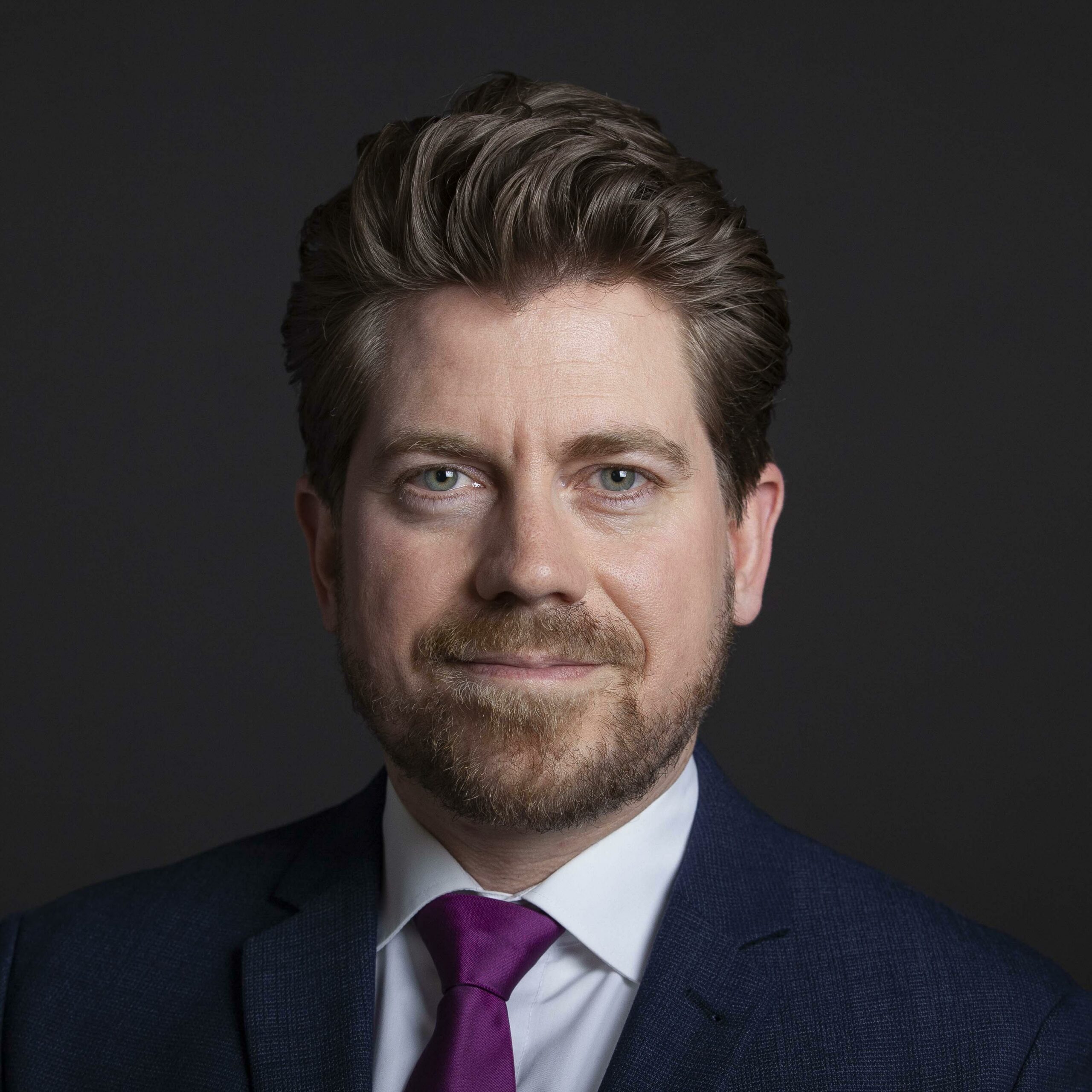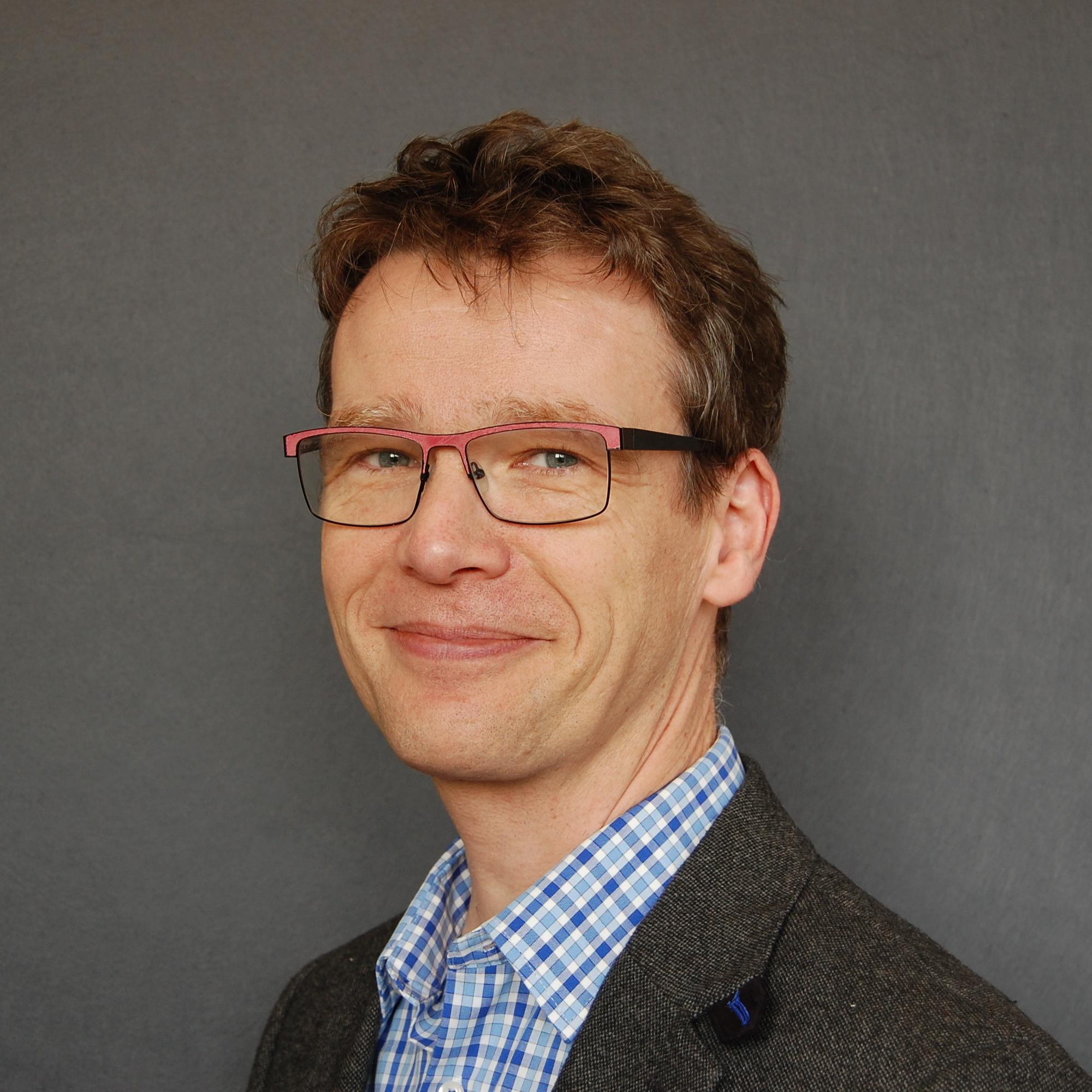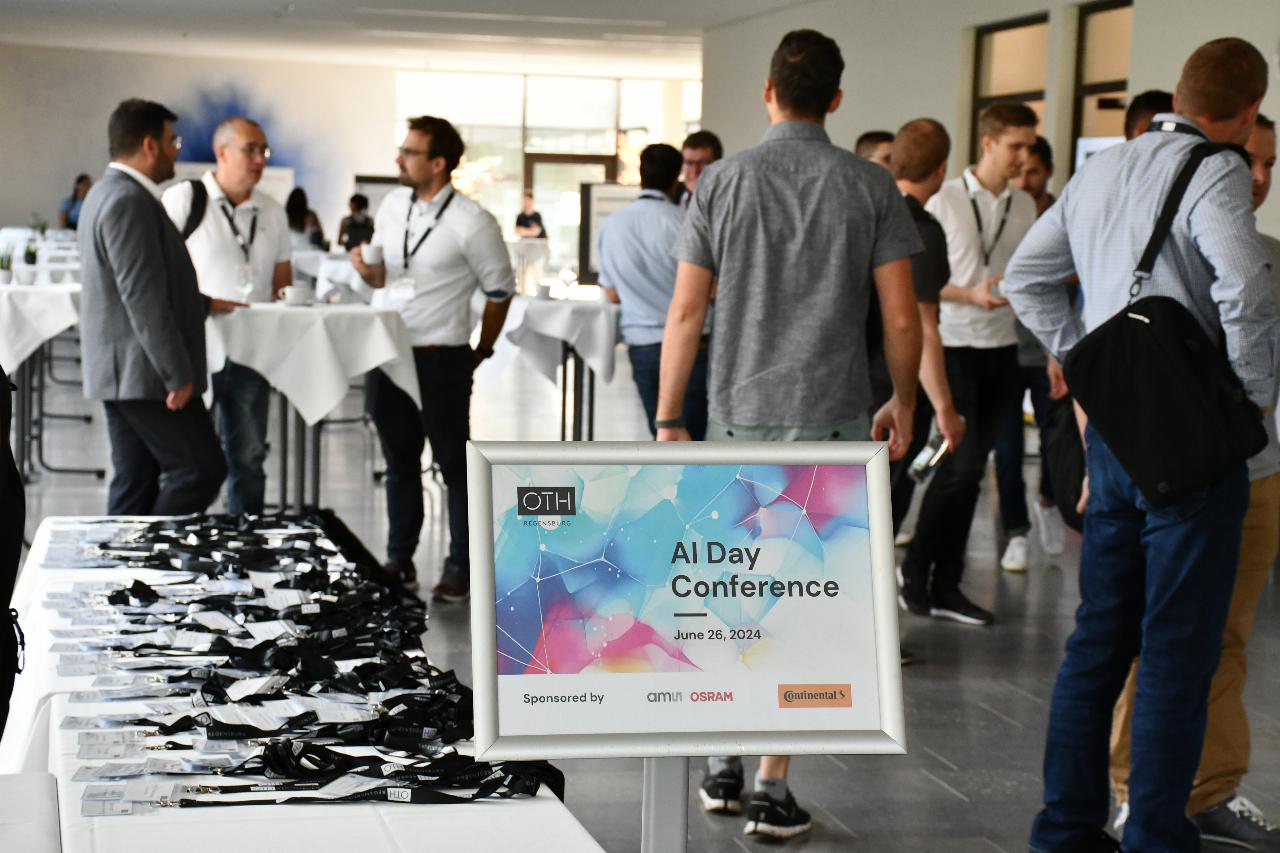
On Wednesday, June 26th, 2024, the first AI Day Conference hosted by the Regensburg Center for Artificial Intelligence (RCAI) and its industrial advisory board at OTH Regensburg showcased inspiring success stories and best practices in all fields of AI!
In four presentation sessions and a dedicated poster session, researchers and practitioners from industry and academia gave talks on AI use cases and insightful case studies from a wide range of topics – from a technological as well as a domain perspective.
The AI Day Conference is taking the next step towards a specialist network that bridges the gap between research and application in order to jointly shape the AI of tomorrow.
Programme Committee

Dr. Maximilian Braun
HORSCH Maschinen GmbH

Igor Neiva Camargo
Continental Automotive Technologies GmbH

Dr. Michael Deubzer
ECOPOLIS Founders

Christian Miedl
AVL Software and Functions GmbH

Andrea Stich
Infineon Technologies AG

Prof. Dr. Lars Krenkel
OTH Regensburg

Prof. Dr. Wolfgang Mauerer
OTH Regensburg

Prof. Dr. Jürgen Mottok
OTH Regensburg

Prof. Dr. Christoph Palm
OTH Regensburg

Prof. Dr. Mathias Obergrießer
OTH Regensburg

Prof. Dr. Armin Sehr
OTH Regensburg
Sponsors


Presentations




Opening and Keynote
09:30 – 09:40
Welcome and Introduction
Prof. Dr. Ralph Schneider, President and Prof. Dr. Wolfgang Mauerer, Chairman Director of the Regensburg Center for Artificial Intelligence (RCAI) at OTH Regensburg
Language: German
09:40 – 10:10
Keynote: Artificial Intelligence in Endoscopy – Examples, Challenges, Solutions
Prof. Dr. Christoph Palm, Research Professor and Member of the Board of Directors of the Regensburg Center for Artificial Intelligence (RCAI) at OTH Regensburg
Language: German
Using the example of oesophageal endoscopy, AI support for the entire process chain from diagnosis to characterisation and treatment is presented. Challenges exist, for example, due to the lack of annotated image material in large quantities or the potential mistrust of doctors when using AI-based tools. Potential solutions are outlined, including semi-supervised learning procedures and uncertainty analyses.
Session 1 ‒ The Art of AI: Strategies for Optimisation and Automation
Session Chair: Andrea Stich, Director Frontend Academy at Infineon Technologies AG
10:10 – 10:30
Revolutionizing Design of Experiments Using Bayesian Optimization
Dr. Lavinia Israel, Data Scientist at ams-OSRAM International GmbH
Language: German
Bayesian optimization is a sequential strategy to optimize objective functions that are unknown and expensive to evaluate. It builds a surrogate model – usually a Gaussian process – for the objective and quantifies the uncertainty in that surrogate. It then uses an acquisition function defined from this surrogate model to decide where to evaluate next. At ams OSRAM we have many processes where process parameters need to be optimized to improve quality and efficiency. These processes do not have a functional representation and in general evaluations (= measurements) are expensive and time-consuming. The well-established method Design of Experiments has some drawbacks which we try to overcome by using Bayesian Optimization. In first projects we showed that we achieve optimal results with very few measurements.
10:30 – 10:50
Automation is Key: MLOps for High Quality ML
Ron Krestel, Machine Learning Engineer and Dr. Thomas Beer, Senior Solution Architect at Continental Automotive Technologies GmbH
Language: German
Even though ML allow novel software solutions, its models often remain opaque, which has a negative impact on the trustworthiness. Trust is needed in critical applications like autonomous or medical systems, where ML models must be especially reliable and of high quality. Aside from the model, also the code and the data that was used to create the model need to be of high quality to detect and minimize erroneous behavior. A combination of known and novel software engineering practices is needed to assess and improve the overall quality.
In recent years, there have been efforts to support engineers in ML-specific tasks with concepts such as ML Operations (MLOps). MLOps streamlines ML development, boosts productity through automation and promotes quality software. This presentation introduces concepts for software quality assessment that simultaneously fulfill the principles of MLOps and thereby address the requirements of projects in practice.
10:50 – 11:10
Exhibition Pitches
All poster presenters
11:10 – 12:00
Poster Session & Networking
Session 2 ‒ Driving Innovation: AI in the Automotive Industry
Session Chair: Christian Miedl, Segmentlead Safety, Security and AI at AVL Software and Functions GmbH
12:00 – 12:20
AI-Based Smartphone Localization for Keyless Car Access
Dr.-Ing. Patrick Philipp, Machine Learning Scientist at Continental Automotive Technologies GmbH
Language: English
We present a real-world machine learning solution for enabling precise AI-based smartphone localization based on UWB sensors in cars, which was primarily developed in Regensburg.
UWB sensors provide time-of-flight and signal strength information for ranging devices, which can be used to localize smartphones to be inside or outside of a car. Here, data-driven methods for classification are especially useful as they reduce the effort for manual configuration and provide high predictive performance for complex data.
In this talk, we first motivate the complexity of realizing AI-based smartphone localization and then give a holistic overview of our iterative data collection, training and analysis process. We show interesting findings on how to meet diverse user requirements as well as how to transparently identify system boundaries. Finally, we emphasize fruitful research directions and possibilities to participate.
12:20 – 12:40
Application Examples of Using AI for Automotive Software Development
Christian Miedl, Segmentlead Safety, Security and AI at AVL Software and Functions GmbH
Artificial intelligence (AI) is not only a buzzword in the automotive industry, but also a key enabler for many advanced features and functions of self-driving cars. In this talk, we will explore how AI can be applied in different stages and aspects of automotive software development based on an example from control software development for safety monitoring functions. We will also discuss how the role of software developers will change as AI becomes more integrated and sophisticated in the development process.
AI for Control Software: Another challenge of cars is to ensure the safety and reliability of the control software that monitors and regulates the vehicle’s functions. AI can help to improve the quality and efficiency of control software development, by using pattern recognition to detect and diagnose malfunctions, and to provide safety support and feedback.
AI for Software Generation: A third challenge of self-driving cars is to cope with the increasing complexity and diversity of software requirements and specifications. AI can help to streamline and accelerate the software development process, by using large language models to generate individual development artifacts, such as requirements acceptance criteria, documentation, and test cases. AI can also help to enhance the creativity and productivity of software developers, by providing suggestions, recommendations, and corrections. However, AI cannot replace the human expertise and intuition of software developers, who still need to control and supervise the AI-generated software.
12:40 – 13:00
Self-Calibrating Perception Sensors for Autonomous Vehicles: The AI Approach
Arya Rachman, Expert Software & Functions Engineer at AVL Software and Functions GmbH
Language: English
Prior to driving, sensors in an autonomous driving system need to be calibrated.
Calibration is crucial to ensure that safety-related perception functions can reliably perceive the environment.
Vehicle sensors are also exposed to mechanical perturbations requiring periodic re-calibration for regular use.
The current widely accepted calibration approaches are based on robust but potentially demanding target-based methods. Such methods require a car to be taken offline and rely on static infrastructure and operators.
The AI approach: we propose a deep-learning-based self-calibration strategy for the vehicular sensors that learns from driving scenarios – they make an inherently large-scale dataset – and is validated back-to-back against checkerboard reprojection for proven reliability.
13:00 – 13:50
Poster Session & Networking
Session 3 ‒ Spotlight on Precision: AI-Driven Diagnosis and Quality Enhancement
Session Chair: Dr. Daniel Grünbaum, Team Lead Data Science at ams-OSRAM international GmbH
13:50 – 14:10
(Cancelled) Unsupervised Anomaly Detection in Continuous Integration Pipelines
Daniel Gerber, Data Scientist at BSH Hausgeräte GmbH
Language: German
Modern embedded systems comprise more and more software. This yields novel challenges in development and quality assurance. Complex software interactions may lead to serious performance issues that can have a crucial economic impact if they are not resolved during development. Henceforth, we decided to develop and evaluate a machine learning-based approach to identify performance issues. Our experiments using real-world data show the applicability of our methodology and outline the value of an integration into modern software processes such as continuous integration.
14:10 – 14:30
A New Approach for AI-Based DGA for Transformers and Tap Changers
Andreas Dreger, Head of Diagnostic Systems at the Competence Center for Measuring and Diagnostics at MESSKO GmbH / Maschinenfabrik Reinhausen GmbH
Language: German
In the field of power transformer maintenance, Dissolved Gas Analysis (DGA) is a widely used technique to assess the health of transformers. It works by examining the concentrations of gases dissolved in the insulating fluid. A new DGA interpretation method is proposed to address the limitations of previous methods, which do not fully account for uncertainties and application data. The proposed method corrects DGA values for non-failure-related influences using application data and equipment-specific parameters. A machine learning approach is then employed to predict the probabilities of different failure states from the corrected DGA values, reflecting the inherent uncertainties in the overall DGA process. The method also explicitly handles missing data and considers the resulting increase in uncertainty. Both the failure state probabilities and uncertainty information are used to automatically generate a recommended course of action. The method’s response to clear-cut and ambiguous situations is demonstrated using a real case example.
14:30 – 14:50
Enhancing Manufacturing Precision through Automated Independent Diagnosis: An On-Demand System for Production Deviation Protocol (PDP), Classification and Error Analysis
Maximilian Deichsel, Business Analyst Artificial Intelligence at Infineon Technologies AG
Language: German
The AID system is a cutting-edge tool designed to function autonomously and on-demand in the manufacturing environment. Triggered by the creation of a Production Deviation Protocol (PDP), which signals an error or anomaly on the shop floor, the AID system initiates a specialized workflow. PDPs are generated either manually by operators or automatically by shop floor control systems such as Statistical Process Control (SPC) or Advanced Process Control (APC). Upon activation, the AID system evaluates the situation and provides a probability vector as an outcome that categorizes the deviation, facilitating easy integration and documentation within the PDP. This result vector is crucial for the initial decision-making process, termed First Decision (FiDe), which relies heavily on the AID’s recommendations. To maintain efficiency and accuracy, the AID system offers a maximum of five classification suggestions per PDP, based on the existing Deviation Decision Help (DDH) and a predefined probability threshold. In addition to the classification suggestions, the AID tool is capable of evaluating the probability of a new defect, based on previously unknown patterns or anomalies. Operating specifically for lot deviations, the AID not only classifies the most probable defect but also enhances the monitoring of defect classifications, aiding in system oversight and root cause analysis, particularly important for new, previously unknown defect characteristics.
14:50 – 15:10
Autoencoder for X-Ray Anomaly Detection
Dr. Johannes Oberpriller, Data Scientist at ams-OSRAM International GmbH
Language: German
Autoencoders are neural networks that can learn to reconstruct their inputs with minimal loss of information. They have been widely used for anomaly detection in various domains, such as fraud detection or health monitoring, where abnormalities need to be identified. In this talk/poster, we show the usefulness of an autoencoder for X-ray diffraction anomaly detection for the epitaxy in semiconductor production. Our autoencoder is trained on samples of X-ray diffraction patterns from epitaxial layers and can detect anomalies by measuring the reconstruction error or the latent representation. We evaluate our method on real datasets at the ams OSRAM group. We discuss its applicability, robustness and challenges for different epitaxy structures and demonstrate its effectiveness in automated production setting.
15:10 – 16:00
Poster Session & Networking
Session 4 ‒ Beyond Words: Success Stories of Large Language Models
Session Chair: Prof. Dr. Timo Baumann, Professor for Natural Language Processing at OTH Regensburg
16:00 – 16:20
LLM-Powered Spoken Dialogue Systems – The Future of Voice Interaction for Home Appliances
Dr. Manuel Kirschner, Speech Technology Specialist at BSH Hausgeräte GmbH
BSH Hausgeräte GmbH is the largest manufacturer of home appliances in Europe and one of the leading companies in the sector worldwide. In this talk, after a brief introduction of our company and our location in Regensburg, we will provide an overview of the current status of Voice Interaction (and Spoken Dialogue Systems) for our global home appliance portfolio. We will present an overview of the different technical solutions (on-the-edge, cloud-based, and hybrid) available today and give you a sneak preview of prototypes that we are currently working on, including a first system that harnesses Large Language Models to demonstrate our vision of the next step towards an enhanced User Experience.
16:20 – 16:40
HORSCH Translation Platform
Dr. Maximilian Braun, Data Scientist at HORSCH Maschinen GmbH
Language: German
Faced with the challenge of decentralized translation processes reliant on external providers who produced inadequate quality, HORSCH embarked on a project aimed at enhancing translation quality and reducing costs through the application of AI technology.
Initially, a specialized dictionary was created by compiling existing translations from multiple sources. Utilizing a transformer-based architecture, bespoke models for specific language pairs were refined to achieve optimal instantaneous translation accuracy.
The unveiling of the initial use case set the momentum for the development of a comprehensive enterprise architecture to manage all of HORSCH’s translation needs.
Fast forward: In the six months following its introduction, the platform has processed an impressive total of approximately 110,000 translations, with an automation rate exceeding 75%. Continuous rapid development of new features for the overall system and improvements to the neural networks ensures further increases in automation.
16:40 – 17:00
Using ChatGPT to Support Intelligence Analysis in Strategic Forecasting
Omololu Adu, Julie Hoffmann, Samuele Minelli and Elena Potitò, Research Trainees at OTH Regensburg
Language: English
ChatGPT analyses information and generates content in seconds. This poster presents research on how generative AI tools such as ChatGPT can be used to support intelligence analysis, focusing on the Analysis of Competing Hypothesis (ACH) as one of the most commonly used methods in scenario development and forecasting. The research presented in the poster examines two aspects of ACH more in depth: (1) the plausibility and consistency of generated hypotheses and (2) the soundness and appropriateness of generated indicators to measure and observe the hypotheses created in (1). To do so, the research draws on the case study of attempting to predict internally displaced persons as a leading cause of Boko Haram violence. It concludes with a set of recommendations for using ChatGPT as a supportive tool in intelligence analysis and outlines fields of further research.
Closing
17:00 – 17:05
Closing Words
Prof. Dr. Wolfgang Mauerer, Chairman Director of the Regensburg Center for Artificial Intelligence (RCAI) at OTH Regensburg
Posters


Production Optimisation
Applying Non-Negative Matrix Factorization for Efficient Crystal Phase Identification in White LEDs
Dr. Sebastian Imhof, ams-OSRAM International GmbH
Uncertainty Quantification with Data-Independent Knowledge Enhancing Yield Prediction Accuracy on Ordinal Delivery Grid
Stefan M. Stroka, ams-Osram International GmbH and Ludwig-Maximilians-Universität
Revolutionizing Optical Inspection in Manufacturing: A Global Deployment of Serverless AI Technology
Johannes Brunner and Magdalena Listl, Continental Automotive Technologies GmbH
AI-Enabled Precision: Defect Detection in Semiconductor Scanning Acoustic Microscope Images
Saad Al-Baddai, Infineon Technologies AG
Uncharted Bonds: Pioneering Scalable Virtual Metrology in AI-Driven Wirebonding
Dr. Jan Papadoudis, Infineon Technologies AG
Leveraging Convolutional Neural Networks to Streamline Root Cause Analysis
Singla Sahil, Infineon Technologies AG
Fast Defect Density Wafermap Classification
Dr. Wu Shu-Chun, Infineon Technologies AG
Optimizing Manufacturing Throughput via Digital Twin Technologies
Alexander Swinarew, Infineon Technologies AG
Predictive Maintenance im Sondermaschinenbau
Amritha Kalluvettukuzhiyil¹, Robert Halladay², Jonathan Epp², Markus Franke¹, Markus Schwab², Michael Kronfeld², Sebastian Bock² und Prof. Dr. Martin Weiß¹, ¹OTH Regensburg und ²Baumann Automation
Transient Surrogate Modeling of Modally Reduced Structures
Markus Franke and Prof. Dr. Marcus Wagner, OTH Regensburg
Smart Cities and Environments for Sustainability
Interpretable Machine Learning for Transportation Mode Choice Modeling on Tracking-Based Revealed Preference Data
Prof. Dr. Simone Weikl, OTH Regensburg, Victoria Dahmen, TU München and Prof. Dr. Klaus Bogenberger, TU München
AI-Enhanced Façade Planning
Simon K. Höng and Prof. Dr. Mathias Obergrießer, OTH Regensburg
A Slim Digital Twin for a Smart City and its Residents
Simon Thelen, Friedrich Eder, Matthias Melzer, Danilo Weber Nunes, Michael Stadler, Prof. Dr. Christian Rechenauer, Prof. Dr. Mathias Obergrießer, Prof. Dr. Ruben Jubeh, Prof. Dr. Klaus Volbert and Prof. Dr. Jan Dünnweber, OTH Regensburg
Determinants of Electricity Expenditure by Private Households. Analysis of the 2018 Survey of Income and Expenditure for Germany
Dr. Caroline Dotter, Miriam Vetter, Prof. Dr. Sonja Haug and Prof. Dr. Karsten Weber, OTH Regensburg
Acceptance and Concerns About Smart Meters and Web-Based Apps: Results of the Project EVEKT
Miriam Vetter, Dr. Caroline Dotter, Prof. Dr. Sonja Haug and Prof. Dr. Karsten Weber, OTH Regensburg
Potential of AI-Based Analysis of Hyperspectral Images for Plant Health Monitoring
Lukas Bauer, Thomas Vitzthumecker, Prof. Dr. Matthias Ehrnsperger and Prof. Dr. Rudolf Bierl, OTH Regensburg
Healthcare and Assistance
Hardware-Aware Neural Architecture Search for Optimizing EEG Seizure Detection in Closed-Loop Neurostimulator
Jonathan Larochelle, Prof. Dr. Peter Woias, Albert-Ludwigs-Universität Freiburg and Prof. Dr. Laura Maria Comella, Hochschule Karlsruhe
Data Augmentation for Images of Chronic Foot Wounds
Max Gutbrod, Benedikt Geisler, David Rauber and Prof. Dr. Christoph Palm, OTH Regensburg
Smoke Classification in Laparoscopic Cholecystectomy Videos Incorporating Spatio-Temporal Information
Tobias Rückert¹, Maximilian Rieder¹, Hubertus Feußner², Dirk Wilhelm², Daniel Rueckert²·³ and Prof. Dr. Christoph Palm¹, ¹OTH Regensburg, ²Klinikum rechts der Isar, Technical University of Munich and ³Imperial College London
Climbing Hold Detection with AI for a Selective Assistance System for Visually Impaired Climbers
Viola Schneider, Matthias Schlauderer and Prof. Dr. Armin Sehr, OTH Regensburg
Education
Introducing a Machine Learning based Voting Technique for Comparison of Learning Path Recommendations
Flemming Bugert and Prof. Dr. Jürgen Mottok, OTH Regensburg
This event was supported by



